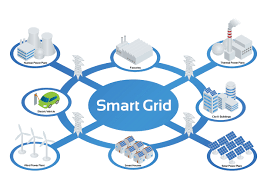Plug-In Electric Vehicles in Smart Grids

We're often asked 'what is the status and future of EV smart-grid charging and what can utilities do to accelerate it? In short, demand is high, infrastructure is ready, but build out needs to accelerate. It is easy to see that the future is moving towards plug-in electric vehicles in smart grids. In fact, it’s becoming more of a necessity now that hybrid electric vehicles are taking the world by storm. So how will these energy sources adapt and expand in this ever-changing landscape? Let’s find out.
What's the Current Status of Plug In Electric Vehicles in Smart Grids?
Currently, with over 11,000 stations in the field, mostly residential, and a large number of them connected to utility grid programs, eMotorWerks has more proven experience and knowledge about smart-grid charging than any other company. We have programs in CA with all 3 IOUs and several municipal and Community Choice Aggregation providers under which EV charging is actively managed, helping both utilities save money and customers earn payments for grid balancing participation. We also manage electric cars across the country and are implementing programs on the east coast for grid services. This is to say nothing of the growing demand we are seeing in Australia, China, India, and Europe for our services and products.
What Are You Doing to Expand the Smart-Grid Market?
Through our existing EVSE OEM partners (and we are signing up more and more) we have access to approximately 50,000 additional stations that we are converting via small plug-in cards into third-party EVSE and our “JuicePlug” to be smart-grid capable. Our JuicePlug product - a universal smart grid charging adapter - gives us access to a full installed base of EVs throughout the world. Finally, EV manufacturers utilize our platform – both hardware and software – to provide electricity grid services benefits to their customers upon purchase of a car.
What About Level 2 versus Level 3 Charging?
Level 2 residential capacity is growing and represents an enormous capacity for grid balancing. Similarly, long-stay workspace capacity is immense. In contrast, public L2 charging, which gets so much attention in the media, does not carry much value for EV-grid integration simply because customers do not want to have charging rates managed when they are at a short-stay public location - they just want the juice, then!
At the same time, because of the benefits of ultra-fast, grid-friendly DC charging for long-distance travel in electric cars, we believe that public L2 charging will become largely obsolete in the next 3-5 years as the infrastructure matures into L2 at home and workspace charging, which will largely supplant the outdated public L2 charging historically installed.
Is EVSE Build Out Going Fast Enough?
The build out of the wrong thing (slow public L2) is going slow, as there is no viable economic model behind it, hardware is too expensive, installation costs are too high, and there is marginal or zero grid service benefit to capture. The focus needs to be on the public build-out of fast DC charging plus residential and workplace L2 charging. However presently-available DC charging products are somewhat inadequate, as they are still quite expensive and progressively less grid-friendly due to their expensive electrical connection requirements and hardware costs, which are issues that eMotorWerks can address for plug-in vehicles.
What Role Can Utilities Play?
The transition from fossil fuels to electricity as a dominant transportation fuel is an enormous opportunity for utilities and they should be at the forefront of stimulating the adoption of plug-in vehicles and smart-grid charging, while allowing for competitive marketplace to perfect the EVSE technologies. The focus of power usage should be around:
- Home and electric vehicle charging
- Stubbing out adequate electrical service (residential, workplace, public)
- Enabling sub-metering through charging stations (rather than expensive, separate meters)
- Incentivizing customers to buy smart-grid enabled charging stations instead of dumb stations (a huge waste of resources)
- Making it easier for customers and providers to sign up EV drivers for electricity grid services programs
- Putting in place additional, market-based grid services programs
Activities like those above will help utilities grow their EV-ready infrastructure faster and let them more effectively and cost-efficiently balance their grids. The demand for electricity and alternative energy sources are there. As long as you know how to adapt to these new changing systems and it’s advanced technology, you’ll be able to take advantage of the wide range of benefits these smart grids provide.
